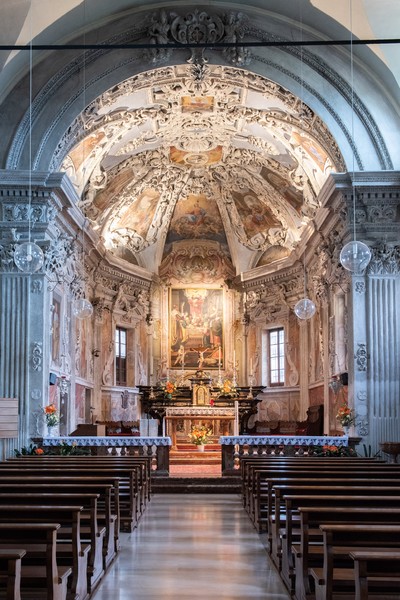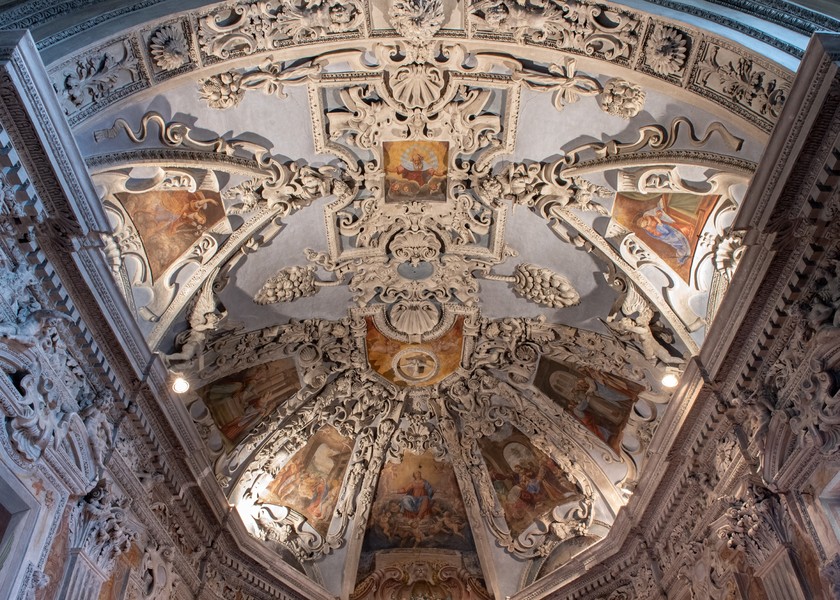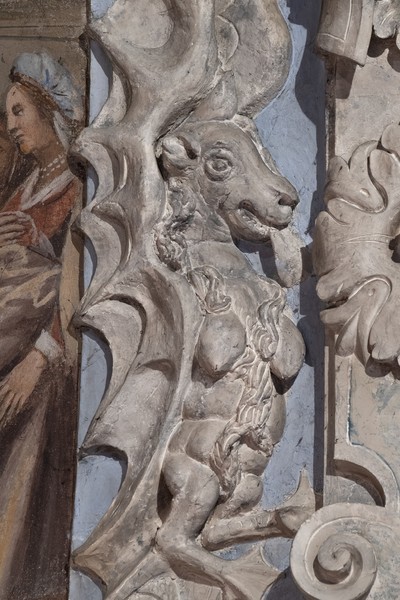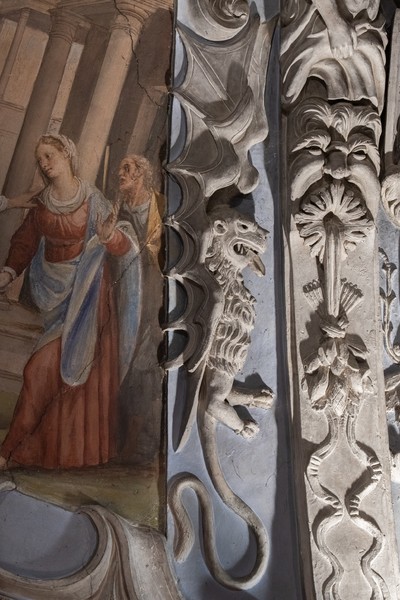CHURCH OF SAINT MARY OF THE PURIFICATION
Chiesa di Santa Maria della Purificazione
Via Cantonale 60
6949 Comano
The Church of Saint Mary of the Purification is first documented in 1359, and from 1468 is recorded as a parish church. The building was enlarged towards the end of the 16th century, however the current appearance is due to a reconstruction beginning in 1613. The building takes the form of a single nave divided in four bays, with side chapels dedicated to the Virgin and St Charles (Fig. 1, 2).
Choir
The choir is decorated with stuccos by Dioniso and Giovanni Antonio Marchi from Comano, artists for whom we have no biographical details or information on other works. The choir frescos with Scenes from the Life of the Virgin (1661) have been attributed to followers of Isidoro Bianchi di Campione (Fig. 3, 4, 5, 6).
Archival documents provide the names of the two stuccatori for the choir, and record interesting details about the execution of the works1. The procedures seem rather typical for worksites of the kind: the presentation of an overall decorative project by the stucco-worker, the supply of raw materials by the client, and the rapid realisation.
The contract between the artists and the parish commissioning the work is dated 3 May 1625 and is stipulated “sotto il portico della Chiesa doppo la messa”, between the stucco-worker Giovanni Antonio Marchi of Comano and the deputies of the church building elected by the community. The contract was also signed by Dioniso, the artist's father, possibly due to Giovanni Antonio's young age but perhaps also because he, as often happened in family businesses, was himself involved as a stuccatore in the completion of the works.
The agreement stipulates that the Marchi, on the basis of a drawing (now lost) will decorate the choir, the triumphal arch and the sub-arch, “quale non è nel dissegno”, by Christmas, meaning in just less than eight months. The purchase of the materials is the responsibility of the patrons, but the artist must request them in good time, cooperating with the community so that the work can be completed on the set dates. Delivery might be extended until Easter, but only if the supply of materials or scaffolding should be delayed due to “diffetto delli agenti”.
The agreed payment is 200 scudi, a substantial sum. Marchi, then, does not offer his work free of charge to the church of his home community, as some of emigrant artists have done, and will do, to pay homage and demonstrate the skills that have sustained their careers.
The appraisal of the completed work is entrusted to the priests of nearby Origlio and Canobbio, with the possibility of advice from “persone perite in simil arte”, who could recommend an increase in payment to as much as 250 scudi.
The first payment (10 per cent of the planned sum) probably took place at the start of the work, on 15 May, less than two weeks after the agreement. The money is collected by Dionysus. Several receipts follow: on 1 July, 30 September and 2 November. The balance was paid on 9 February, meaning just over a month past the agreed delivery date. Following the expert consideration of the priests of Canobbio and Origlio, the fee was increased by 30 scudi, showing how well the work was appreciated.











